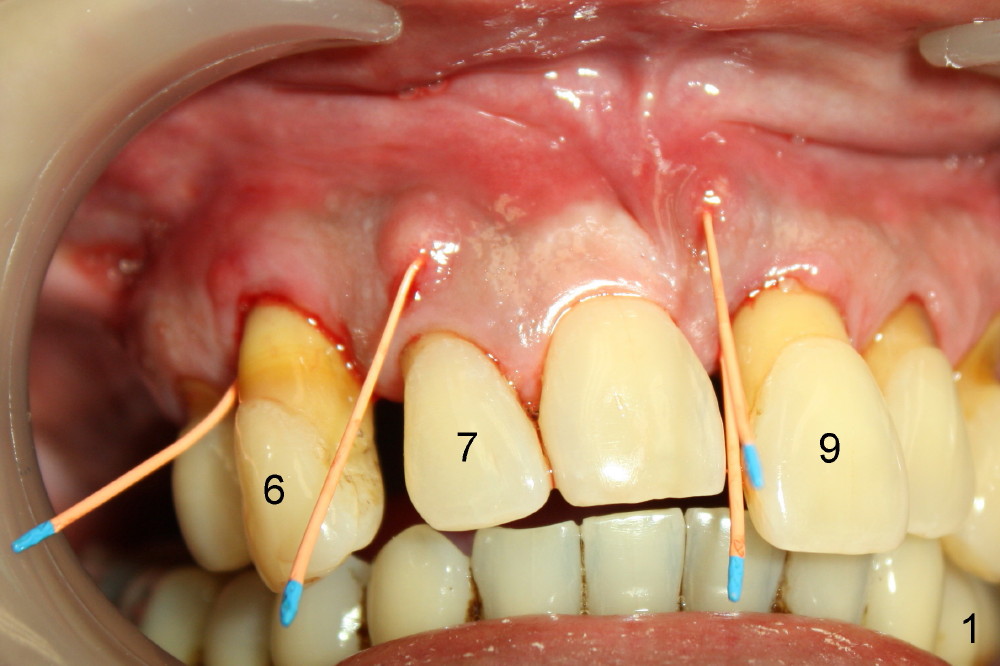
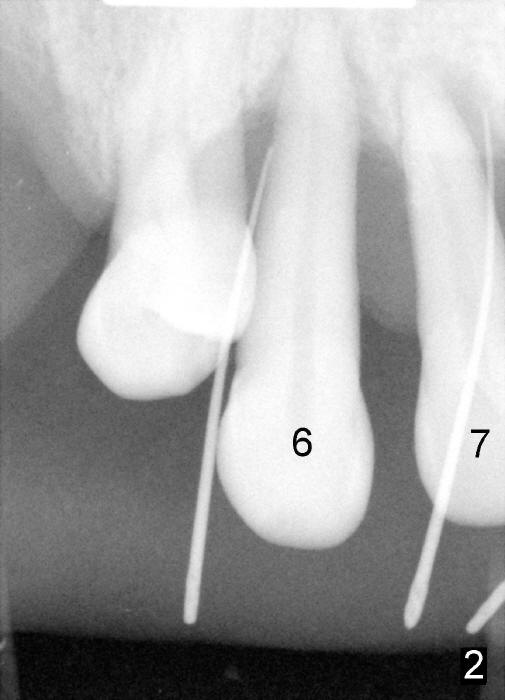
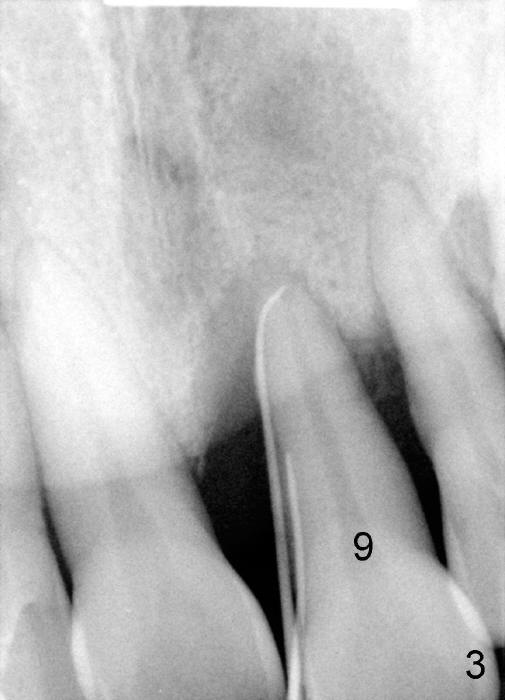
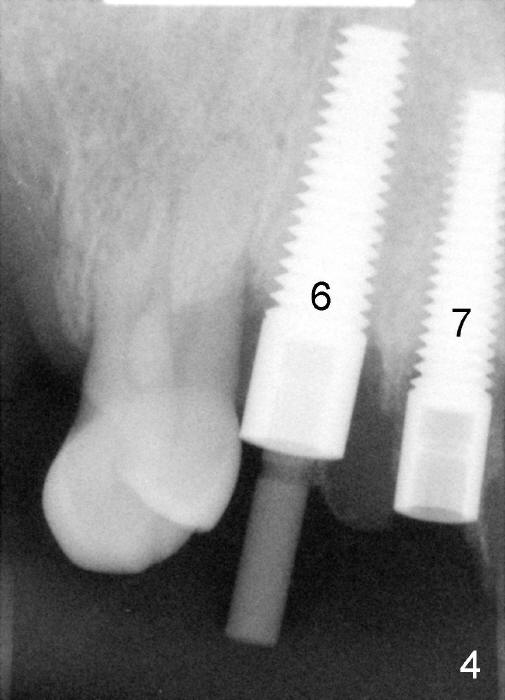
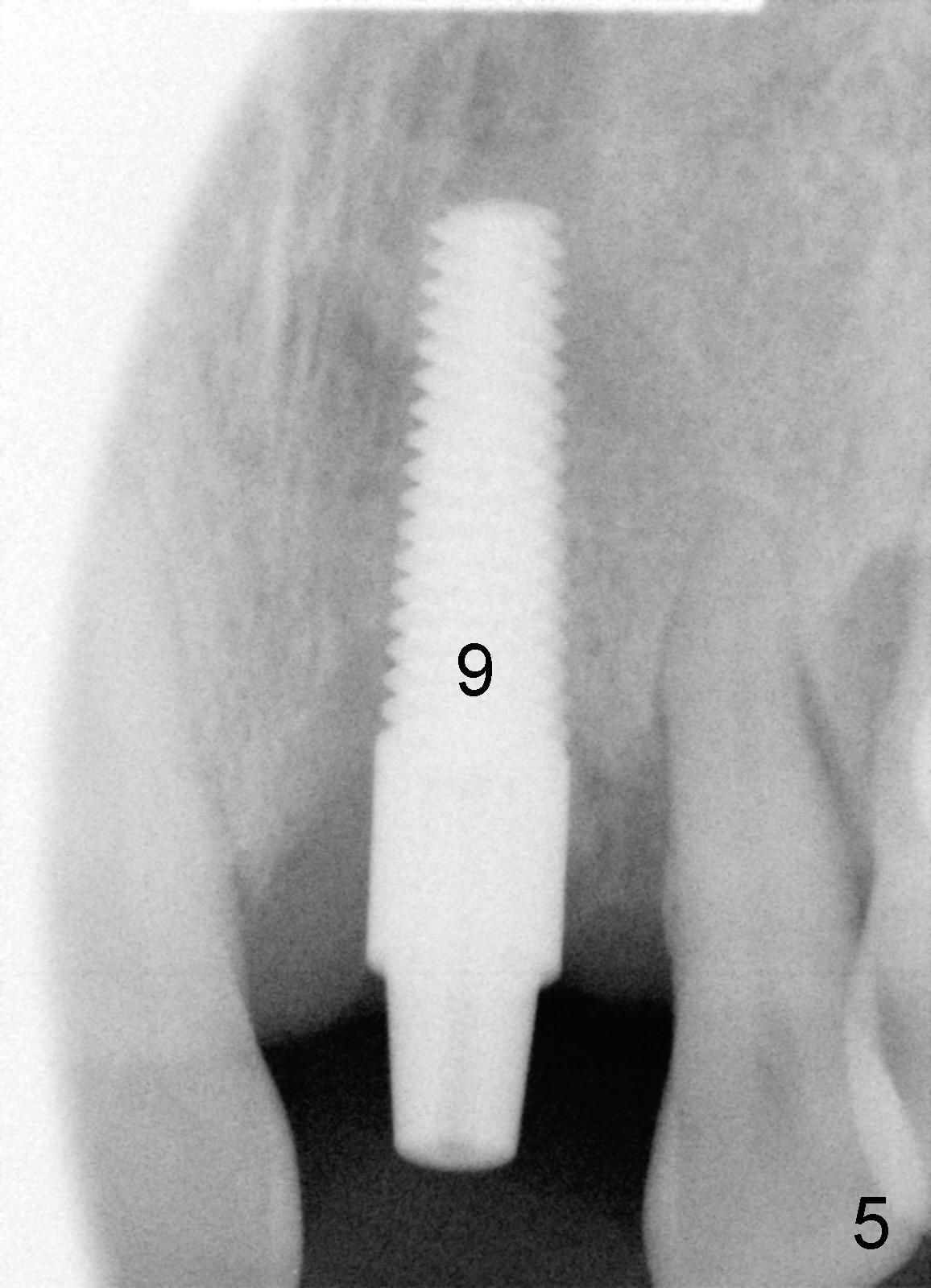
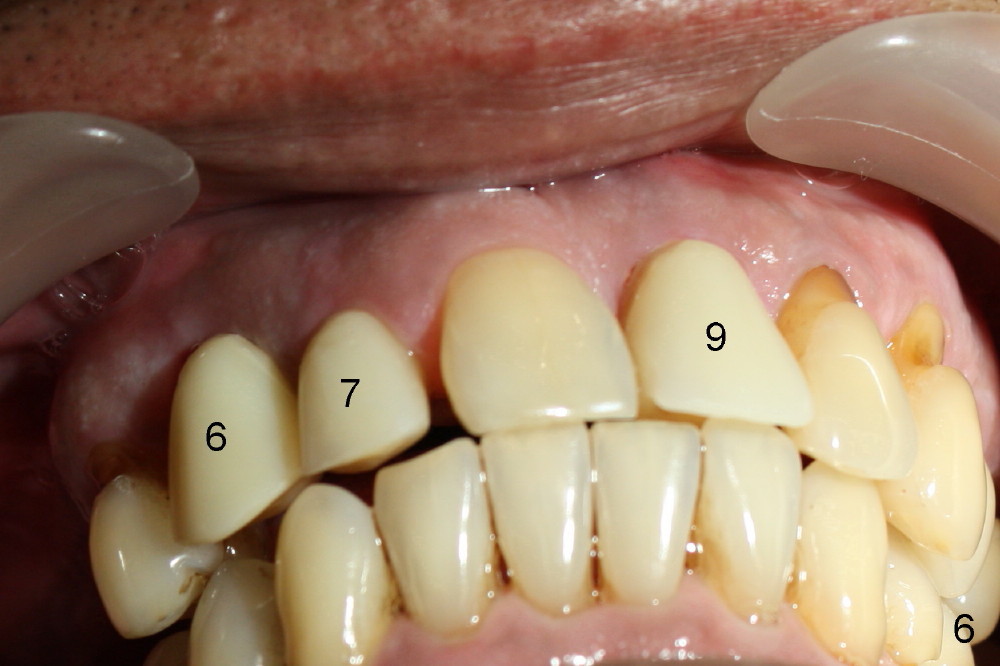
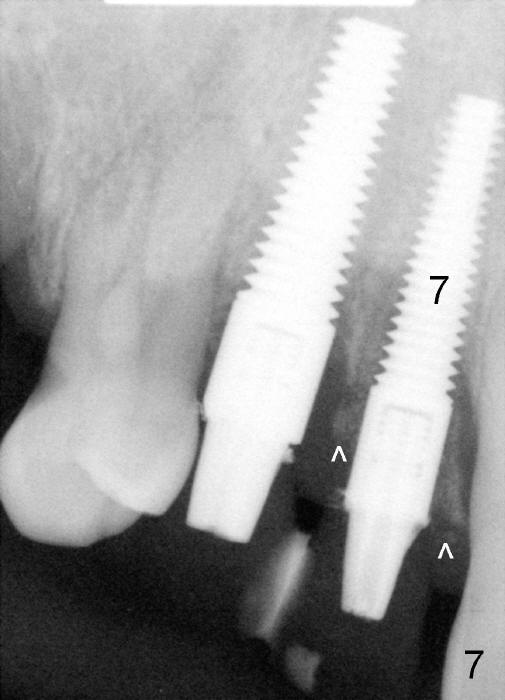
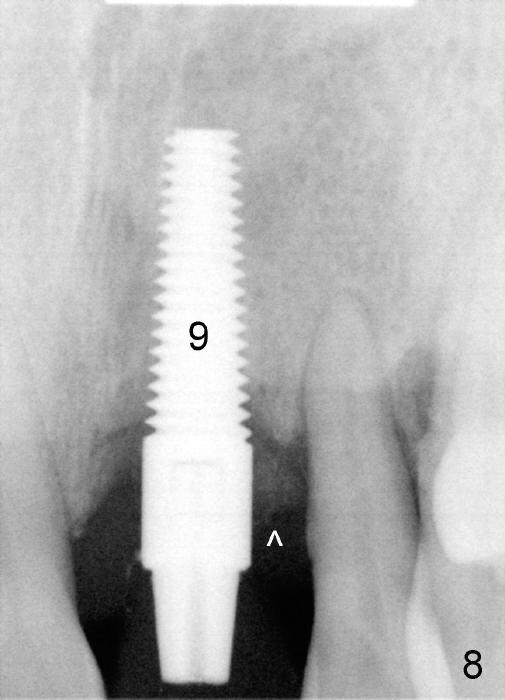
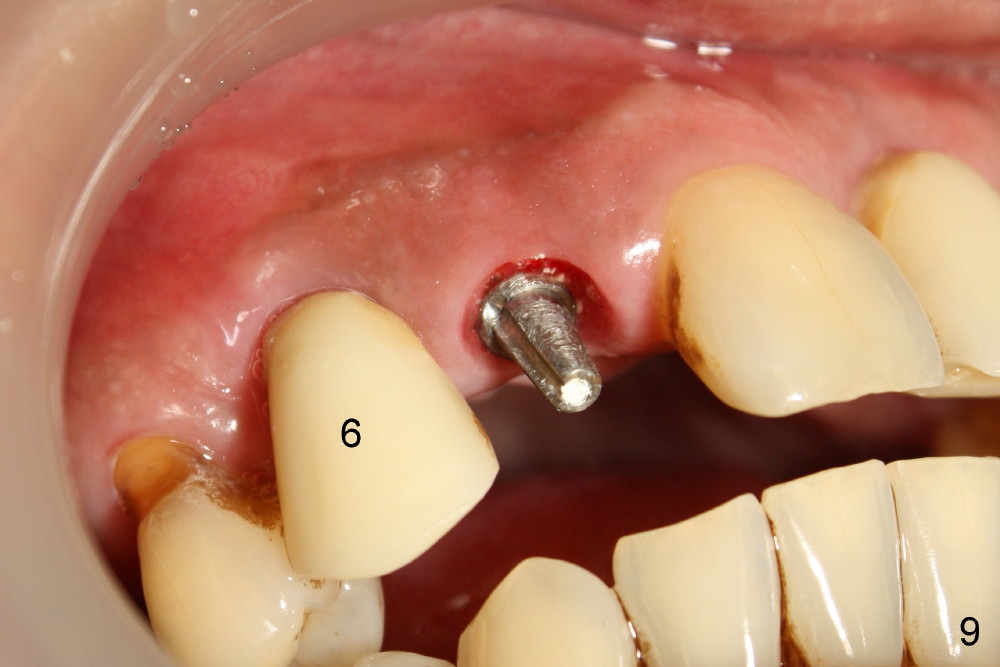
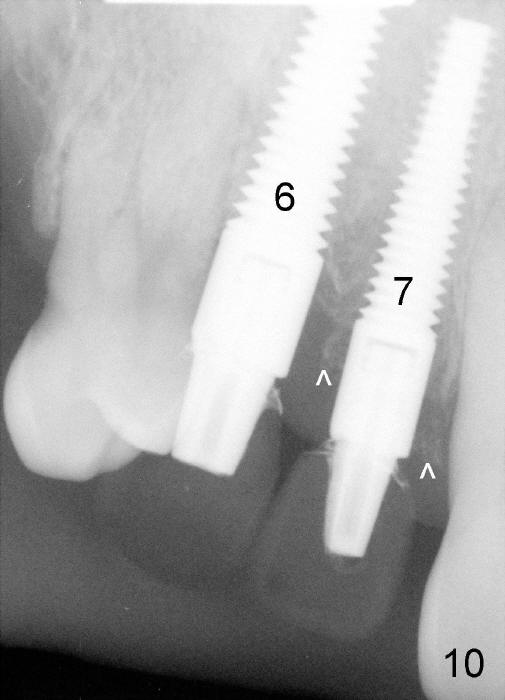
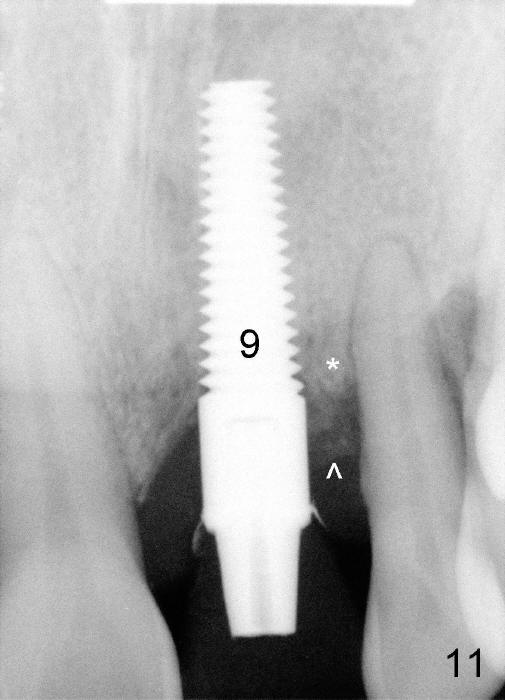
 |
 |
 |
|
 |
 |
 |
|
 |
 |
 |
|
 |
 |
||
Immediate Loading in Smoker
A 52-year-old man has severe periodontal disease with occlusal trauma (Fig.1-3). It appears that the upper teeth are non salvageable and are best treated by hybrid denture. But his finance is strained.
The patient is a heavy smoker. He reduces smoking prior to surgery. The most severely affected teeth (#6,7 and 9) are extracted and immediately replaced by 4x20 mm (#7, insertion torque 40/45) and 5x20 (#6,9, insertion torque over 60 Ncm) implants with (Fig.4,5). Straight (0 degree) abutments (3 and 4 mm, respectively) are rotated tightly into the wells of the implants by hand screw driver. In order to have reversibility to hybrid denture in the future, these abutments are not cemented. Heavy retention grooves are placed between the uniposts and implants. Provisionals are fabricated immediately and cemented temporarily. To increase stability, flowable composite is added to the area between the provisionals of #6 and 7.
Pre-, intraop and postop anti-infection measures are taken.
Fig.6 shows these provisionals 1 week postop. The patient is happy with the result. His diet is confined to soft food. The provisional at the site of #9 is slightly mobile.
The patient returns 1.5 months postop. The provisional of #7 is off (Fig.9) and then recemented and bonded to the provisional of #6 with flowable composite.
The provisional of #9 is still wiggling a little bit buccolingually. It is probably due to loose connection between the implant and the abutment, although follow up PAs do not support it (Fig.7,8; ^: bone graft at the time of immediate implants).
Six months postop, the patient returns because of loss of the provisional at the site of #7 (Fig.9). In fact, all of the three abutments are loose. They are permanently cemented. The provisionals are temporarily cemented (Fig.10,11). Surprisingly, the bone graft appears to survive (^). One of it appears to fuse with the crest (Fig.11 *, as compared to Fig.8).
Return to Upper Incisor Immediate Implant Systemic Diseases
Xin Wei, DDS, PhD, MS 1st edition 12/16/2013, last revision 04/29/2018